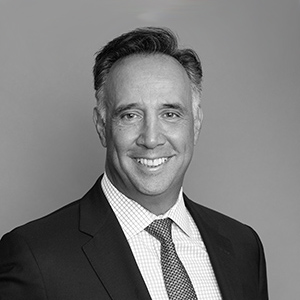Published September 29, 2021 | 3 min watch
Key Points
- Opportunities for grid operators to benefit from the decarbonization trend and changing consumption patterns
- Existing and emerging challenges for grids
- The role of regulatory frameworks to incentivize new transmission and the optimization of existing footprints
- The importance of indirect greenhouse gas emissions, and the opportunities and threats from broader public policy initiatives
What role can grids play in delivering net zero? RBC invited leading utilities executives to discuss the potential to better utilize the grid to reach decarbonisation goals, they included: Nicholas Akins, Chairman, President, Chief Executive Officer, American Electric Power, David Hutchen, Chief Executive Officer, Fortis, and John Pettigrew, Chief Executive Officer, National Grid.
Three Key Takeaways:
Utilities are investing vast amounts in the energy transition
American Electric Power (AEP) has invested in the monetisation and security of the electric grid, resource diversification, technology & innovation to enable the transition to a clean energy future whilst preserving universal access to the grid for its customers. It has implemented a U.S.37 bln capex plan - 85% of which was spent on renewables, to transform its transmission and distribution (T&D) operations. “We have to ensure the reliability and resiliency associated with the grid, but also address the changes of the generation of retirements,” explains Nicholas Akins. AEP has retired over 50% over its coal fire generation since 2000, with another 46% is to be retired over the next few years. Fortis, a diversified gas & electrical company with operations across Canada, the US and the Caribbean, owns the largest independent transmission company in America, ITC. Fortis has established ambitious carbon reduction targets of 75% by 2035 compared to 2019 levels. With its 16000 miles of transmission across 7 states in the Mid-West, and an investment plan of about U.S. 5bln, ITC is very well positioned for the growth of clean energy, says David Hutchen.
An efficient grid, a pre-requisite for the electrification of transport
National Grid supplies gas and electricity to millions of customers and communities in the UK and the US, driving change through engineering and innovation and implementing new ideas to revolutionize the industry. “As we look at the decarbonisation of generation, our sense is that the pathway is pretty well set - how much solar, wind, nuclear we need - so we are clear about the types of investments we need to make to make that decarbonisation happen. We want to modernise the grid, so we digitize the grid as well at the same time. The second pathway we think about a lot is the electrification of transport,” notes John Pettigrew. A very robust grid going forward will be necessary to manage the increased demand from electrification efforts, adds David Hutchen. “One lesson we learnt in 2020 was the importance of resilience, which is different to reliability. We have to focus on finding solutions for whatever nature throws at us – we need to secure the grid from a cyber and physical perspective.” The industry needs to catch up with the adoption of electric vehicles to be able support it and do it efficiently. Technologies like vehicle to grid can provide some support for local distribution networks. For this to happen, policies are important, as well as partnerships with automobile and utilities players to get a fast and efficient adoption and deployment of electric vehicles.
COVID-19 increased the greenification of the sector
Some key obstacles remain, such as the decarbonisation of heat, stresses John Pettigrew. National Grid is piloting the use of innovative technologies around hydrogen to address this. “We set an ambition to be able to operate the system with zero carbon generation by 2025. In the UK, COVID brought for us the challenge of low demand and high renewables, so in summer 2020 we were operating with offshore wind and solar. This accelerated a lot of the tools we knew we needed in 5 years’ time.” Technology will also help solve the challenge of intermittency and the inertia in the system linked to the use of renewables. For Nicholas Akins, ongoing discussions with regulators and futureproofing are critical. “From a T&D resiliency standpoint, you need to make sure to have the mechanisms in place and recovery drivers. We also need to focus on the future and the use of new technologies like analytics and the capital to find solutions to reduce customers’ bills and give them the opportunity and information they need to do that. We need to move to a cleaner environment - customers want it, investors want it,” he concludes.

